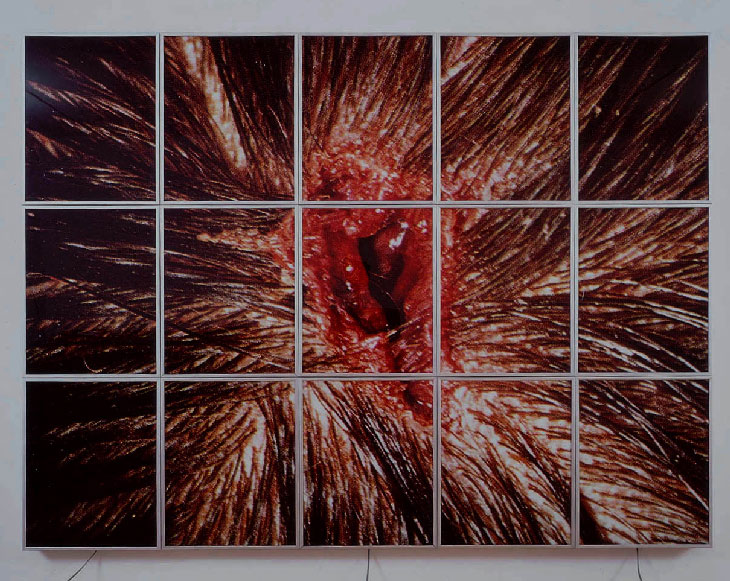
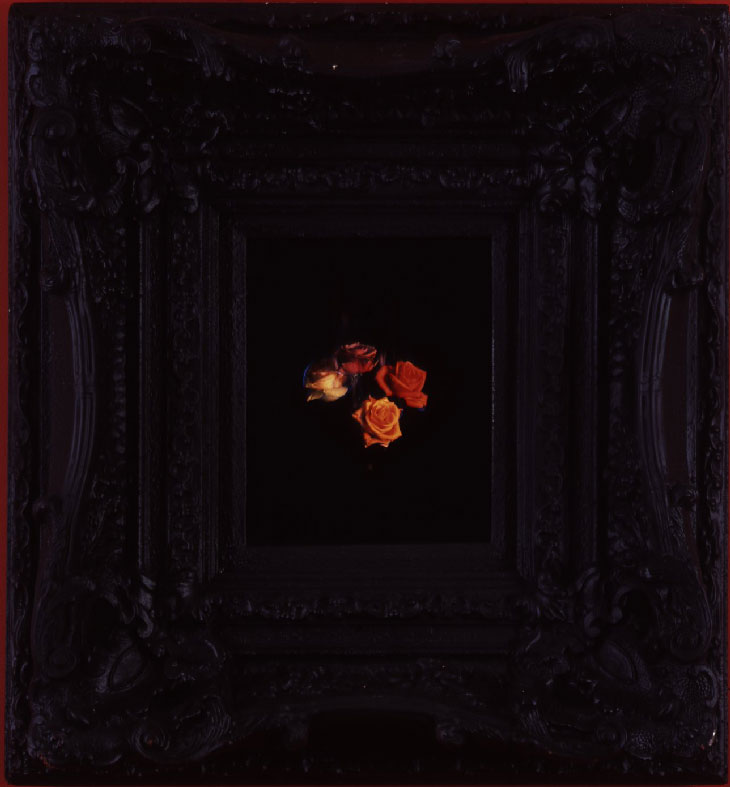
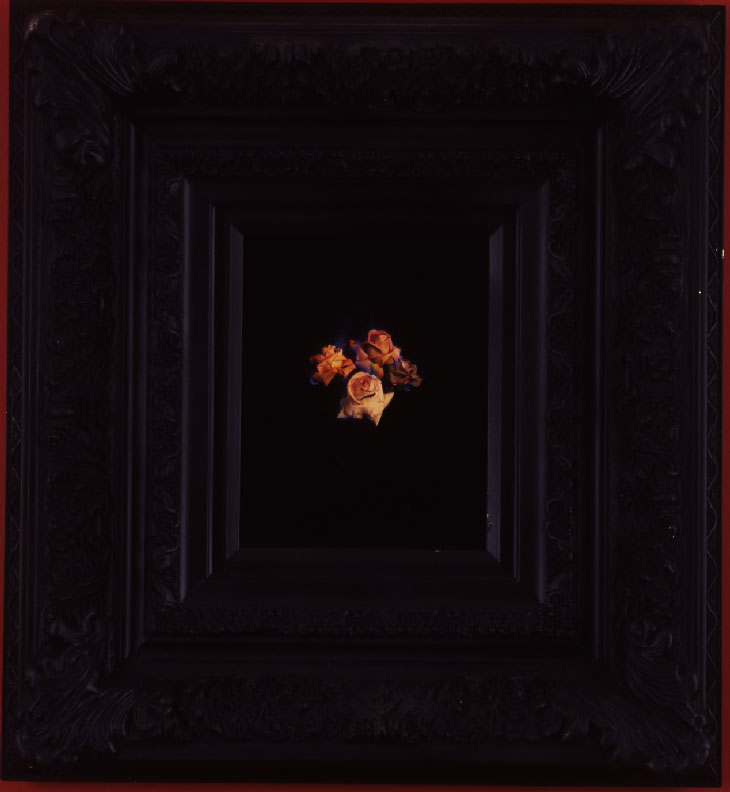
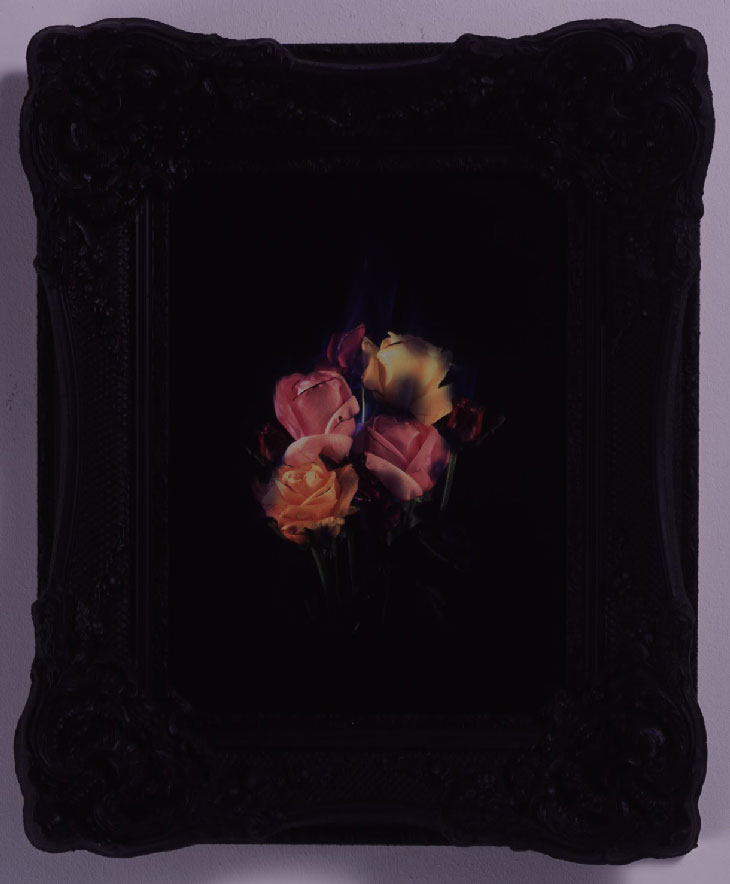
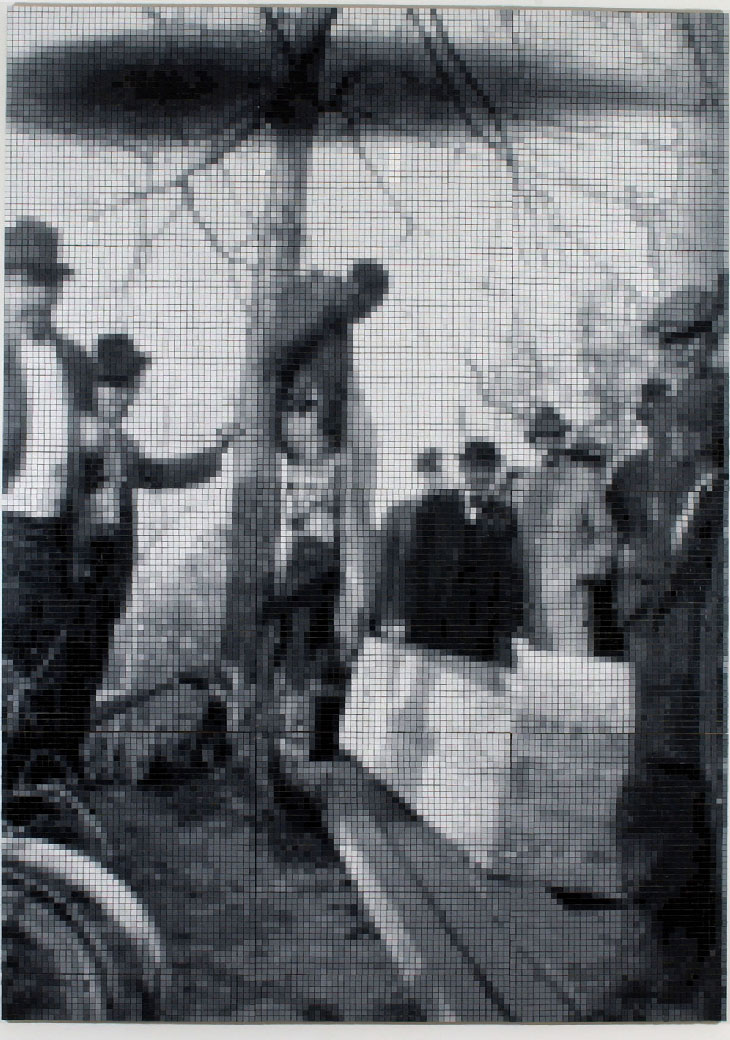
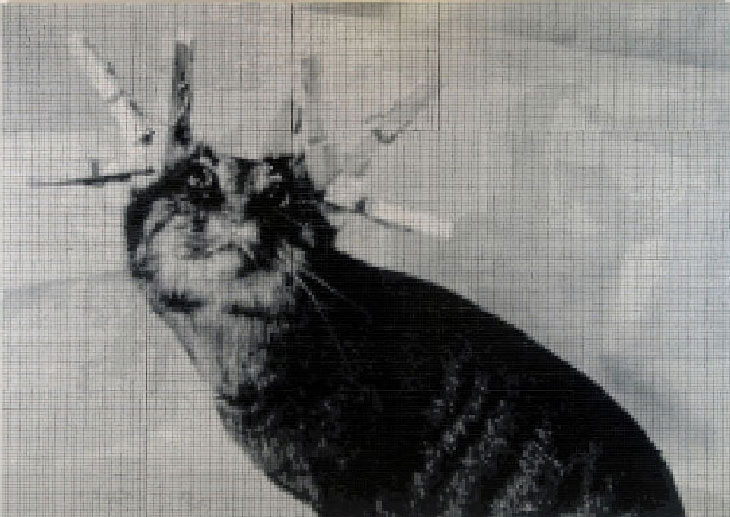
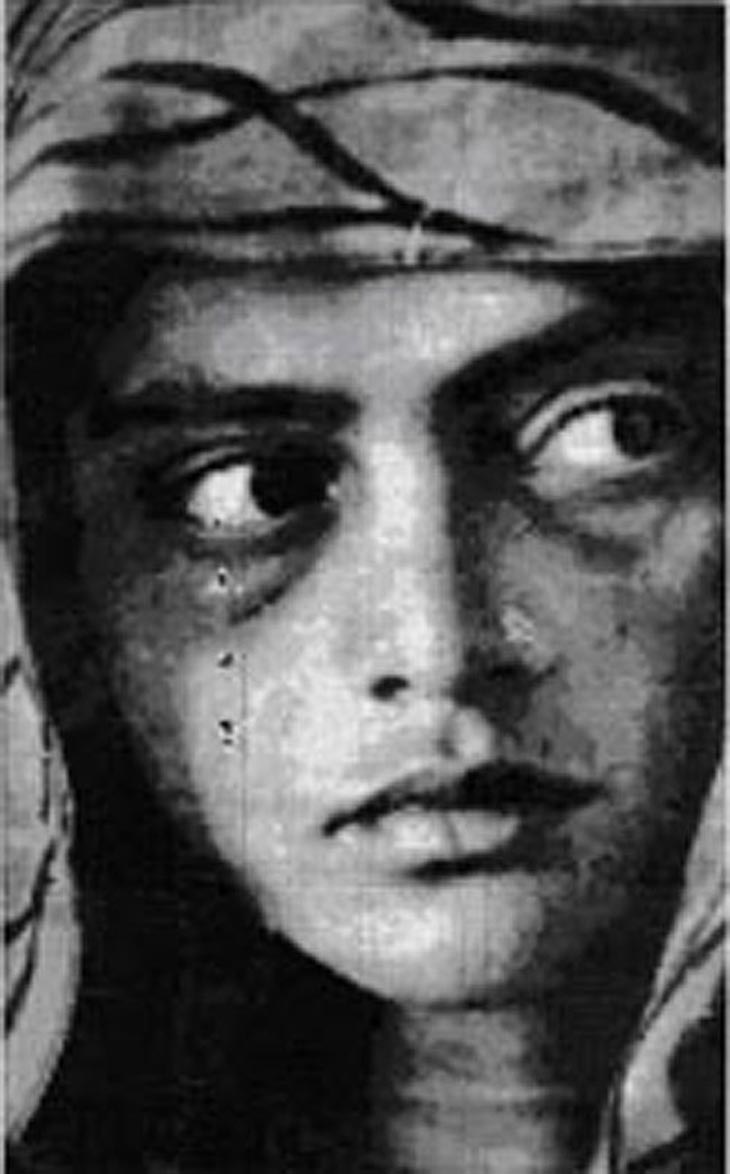
ARTIST:
Mat Collishaw
Bullethole is one large photo, made up of 15 frames, fragmented like the panes of a stained glass window. At first glance, it’s unreadable, like an abstract painting. Then an image registers: a gaping vagina. It’s only with the full realisation that this is a close up of a head wound (taken from a pathology textbook) that the layering becomes complete: there’s a religious beauty and animal sexuality in something so abhorrent.
Central to Mat Collishaw’s work are the themes of illusion and desire, which he uses to draw us into an arena where every-day conventions are broken down and questioned.
Mat Collishaw states: “The type of adverts to be found on television and in glossy magazines are visually designed to have a power over the mind before they can even be questioned. The dark side of my work, primarily concerns the internal mechanisms of visual imagery and how these mechanisms address the mind.â€
Mat Collishaw can always find the intrinsically evil in photography. His subjects are often shocking and horrific – but it’s always the medium which is most disturbing. In The Eighth Day, Collishaw reproduces a photo of a real lynching found in an old book – but he does it in a monumental mosaic. Originally used in ancient times to immortalise gods, saints, and martyrs, mosaics were used to preserve timeless morals. But there’s something freakishly futuristic about Collishaw’s epic – black and white images are a modern invention, the miniscule tiles convincingly parody computer pixellation.
Corona and Madonna have a historically epic quality. Corona disturbingly implies early 20th Century experimentation, Madonna’s timeless face is cropped from a photograph of an Indian woman taken after her village was destroyed in a flood. These tragic images seem all too contemporary with their digitised high-gloss finish. However, their surfaces aren’t photographs at all, rather they’re made up of tiny, cold ceramic tiles. Mat Collishaw uses mosaic to immortalise his subjects the same way images of saints and martyrs were rendered in early churches, but by doing so he replicates the process of image transmission over the internet.






